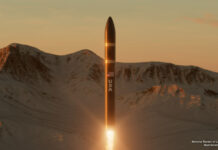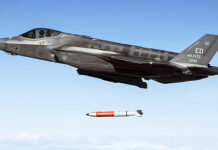The Long Range Discrimination Radar (LRDR) located at Clear Space Force Station in Alaska has completed its final acceptance procedures and has been officially handed over to the US Missile Defense Agency (MDA) in preparation for an Operational Capability Baseline (OCB) decision and final transition into service, its manufacturer, Lockheed Martin, reported on 22 April 2024.
In addition, prior to this transition, the system has already started space domain awareness data collects for the US Space Force.
“This milestone represents years of dedication to the MDA’s mission to protect our homeland,” Chandra Marshall, vice president of radar and sensor systems at Lockheed Martin, was quoted as saying in a company press release. “LRDR is a cutting-edge asset providing the benefits of both low-frequency and high-frequency radars for an innovative approach to search, track, and discriminate targets.”
The LRDR in Alaska is part of the US Ground-based Midcourse Defense anti-ballistic missile system. Lockheed Martin received a USD 784 million (EUR 734 million) contract to build the system in October 2015.
The system features a gallium nitride (GaN)-based active electronically scanned array (AESA) radar operating in the S-band that can simultaneously search and track multiple small objects, including all classes of ballistic missiles, at very long ranges, under continuous operation. The LRDR’s discrimination capability will allow it to identify lethal objects, such as enemy warheads, and differentiate them from non-lethal decoys. The system, along with other elements of the US national missile defence system, is designed to preserve the US inventory of homeland defence interceptors by conserving the number of Ground-Based Interceptors (GBIs) required to successfully engage incoming threats.
The LRDR features an open-systems architecture designed to be scaled and extended to counter evolving threats without changing the system’s basic hardware design. For example, Lockheed Martin is currently adding new capability in support of defending against hypersonic weapons that will give decision makers actionable information to make timely decisions faster.
In addition to missile defence, the LRDR system supports space domain awareness by monitoring satellites orbiting the Earth, detecting, tracking and identifying active or inactive satellites, spent rocket bodies and debris.















